Trimming your goat’s hooves is an crucial part of their overall health and well-being. Regular hoof maintenance ensures your goats can move comfortably and avoids potential hoof problems. In this step-by-step guide, we will walk you through the proper techniques and tools needed to trim your goat’s hooves safely and effectively, keeping them happy and healthy. Follow these simple instructions to master the art of hoof trimming for your goats.
Key Takeaways:
- Proper hoof trimming is crucial for goat health: Regular hoof trimming for goats is important to prevent overgrowth, reduce the risk of infections, and maintain overall well-being of the goats.
- Use the right tools and technique: Invest in a good pair of hoof trimmers designed for goats and trim the hooves carefully, making sure not to cut too close to the quick.
- Be proactive and consistent: Establish a regular trimming schedule and check the hooves often for any signs of overgrowth or issues to address them promptly.
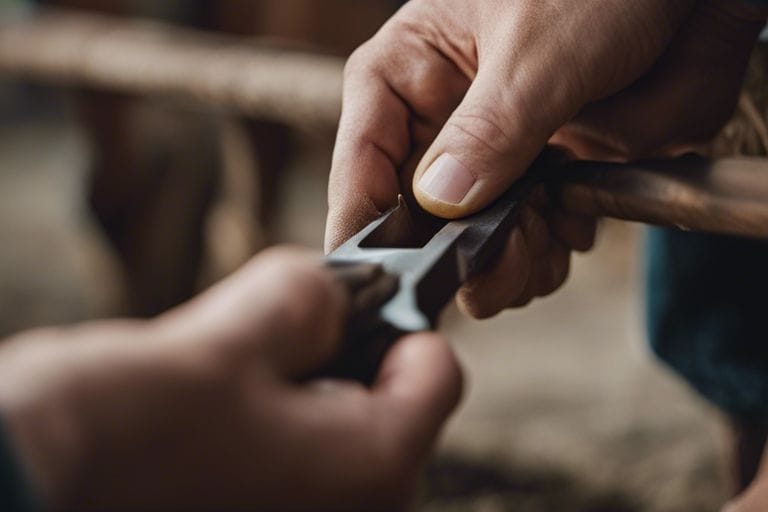
Understanding the Importance of Hoof Trimming for Goats
Cruciality of Hoof Trimming For Goats
For goats, proper hoof care is vital for their overall health and well-being. Hoof trimming for goats helps prevent lameness and other foot problems that can arise from overgrown hooves. It also promotes proper weight distribution and posture, ultimately leading to a healthier and more active goat.
Regular hoof trimming is crucial for goats that are kept in captivity or on soft ground, as their hooves may not naturally wear down as much as they would in the wild. By maintaining their hooves, you are ensuring that they can move comfortably and avoid any unnecessary pain or discomfort.
Consequences of Neglecting Hoof Trimming for Goats
Even though hoof trimming for goats can be a daunting task for some goat owners, neglecting it can have serious consequences for the animals. Overgrown hooves can cause imbalances in the goat’s gait, leading to joint and muscle problems over time. This can result in decreased mobility and even weight loss, as the goat may avoid moving due to the discomfort.
For instance, severe neglect of hoof trimming for goats can lead to hoof rot, a painful condition that affects the tissues of the hoof. This can be not only uncomfortable for the goat but also difficult and costly to treat once it has progressed.
Why Does Your Goat Hood Need Regular Checkup?
Imagine your goat wearing high heels all the time. That’s kind of what overgrown hooves feel like. In their natural habitat, goats climb and scamper on rough terrain, which keeps their hooves nice and worn down. But in our comfy pastures and pens, those hooves just keep on growing.
This can lead to a whole bunch of problems:
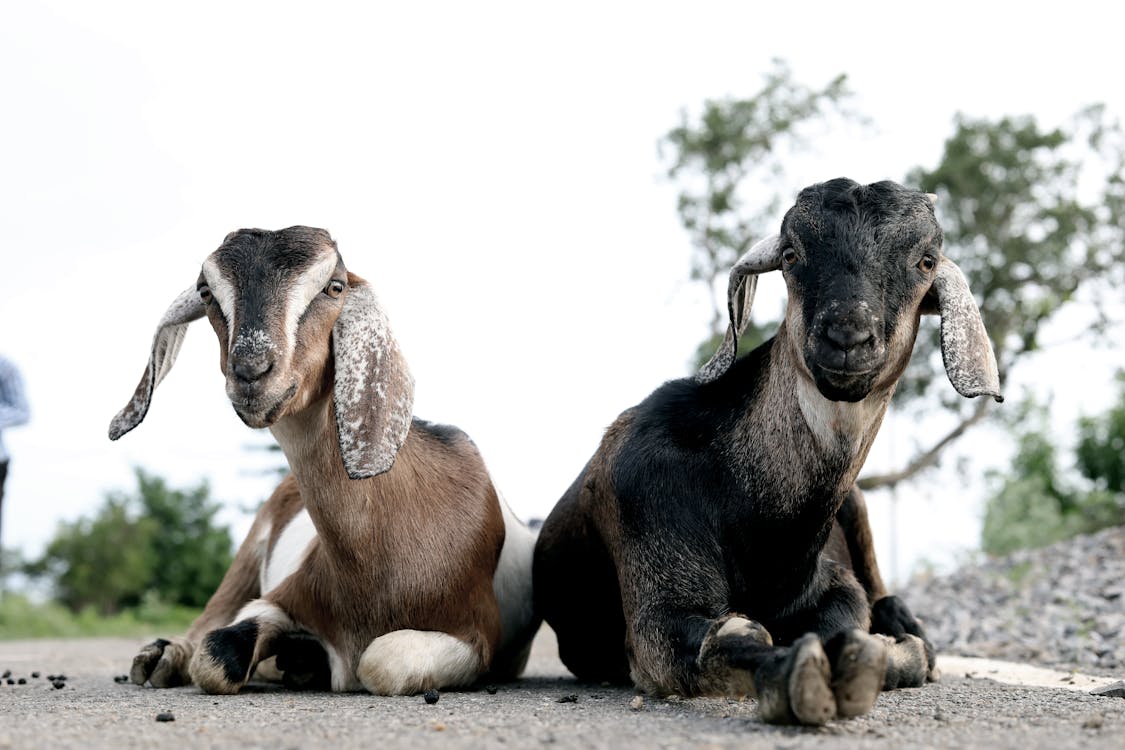
- Painful walkies: Overgrown hooves throw their whole walking motion off, making it uncomfortable and even painful for them to get around. Imagine trying to walk on tiptoe all day – not fun!
- Hoof rot city: Those long, curled-over hooves trap dirt and moisture, creating a perfect breeding ground for nasty bacteria that can lead to infections like hoof rot.
- Ouchy joints: When hooves get too long, it puts a strain on their legs and joints. Over time, this can lead to arthritis and other long-term problems.
Regular trims are like comfy slippers for your goats. They can walk comfortably, graze efficiently, and avoid those nasty infections. It’s a win-win for everyone!
Types of Hoof Trimming for Goats Methods
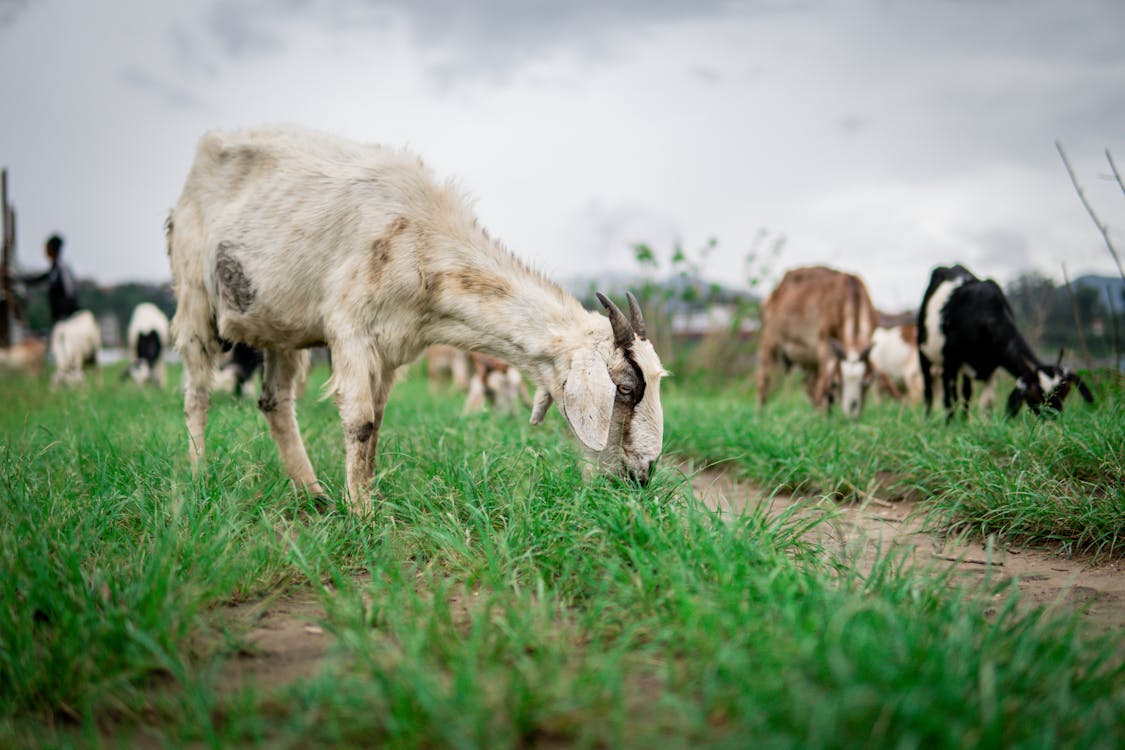
The Traditional Trimming Methods involve the use of basic tools such as a hoof knife, rasp, and hoof trimmers. This approach requires manual labor and can be time-consuming, but it is effective in maintaining the overall health of the goat’s hooves. The process involves trimming the overgrown parts of the hoof, smoothing out rough edges, and checking for any signs of infections or issues. After the trimming is complete, it is necessary to apply a hoof conditioner to keep the hooves moisturized and healthy.
The Modern Trimming Techniques utilize electric rotary tools or grinders specially designed for hoof trimming for goats. These tools are more efficient and precise compared to traditional methods, making the trimming process quicker and easier. Now, let’s take a closer look at these modern tools and how they are revolutionizing the way goats’ hooves are trimmed.
Plus, the electric rotary tools used in modern trimming techniques are equipped with various attachments, such as grinding discs and sanding bands, to cater to different hoof sizes and conditions. These tools provide a more uniform and consistent trim, reducing the risk of over-trimming or causing injury to the goat. Moreover, modern trimming techniques are preferred by many goat owners for their speed and accuracy in maintaining hoof health.
Comparing Different Trimming Approaches
| Traditional Trimming Methods | Modern Trimming Techniques |
| Manual labor | Electric rotary tools |
| Basic tools used | Precise trimming with specialized tools |
| Time-consuming process | Efficient and quick trimming |
| Requires skill and practice | Less skill required due to tool precision |
hoof trimming for goats is an necessary part of caring for goats, and choosing the right trimming approach depends on various factors such as the goat’s temperament, hoof condition, and the owner’s experience level. It is important to consider these factors when deciding between traditional and modern trimming methods to ensure the goats’ hooves are properly maintained.
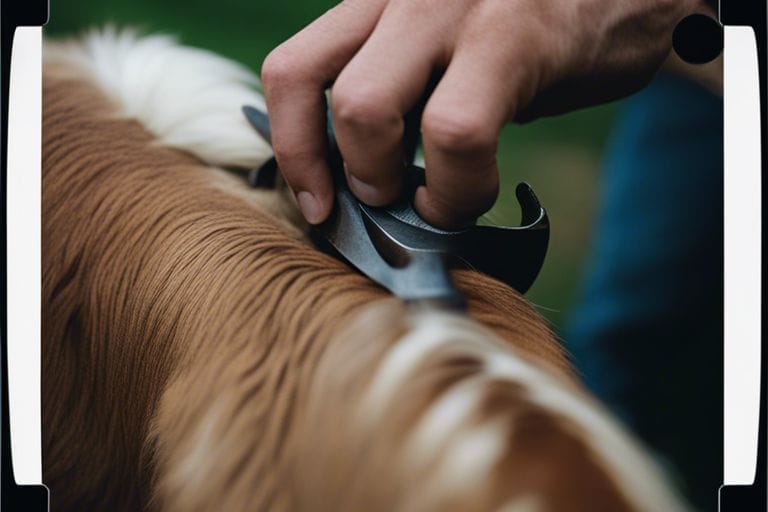
Factors to Consider Before Trimming
Before you start trimming your goat’s hooves, it is important to take into account several factors that can influence the process. Not considering these factors could lead to improper trimming, which can be uncomfortable or even harmful to your goat.
Age and Breed of the Goat
Consider the age and breed of your goat before trimming its hooves. Young goats may have softer hooves that are more sensitive, while older goats may have tougher hooves that require more force to trim. Different breeds may also have varying hoof shapes and growth rates, so it’s important to tailor your trimming technique accordingly. Knowing the age and breed of your goat will help you determine the best approach for trimming its hooves.
Hoof Condition and Health Status
Breed plays a significant role in determining the condition and health status of a goat’s hooves. Some breeds are more prone to hoof problems such as overgrowth, cracks, or infections. It’s important to regularly check the hooves for any issues and address them promptly. Factors such as diet, living conditions, and genetic predispositions can also affect hoof health.
- Regularly inspect the hooves for signs of overgrowth, cracks, or infections.
- Consult with a veterinarian if you notice any abnormalities or persistent issues with the hooves.
- Ensure your goat has access to a clean and dry living environment to prevent hoof problems.
Knowing the hoof condition and health status of your goat will help you determine the frequency and extent of trimming required.
Environmental Factors Affecting Hoof Growth
Environmental factors such as diet, terrain, and living conditions can significantly impact the rate of hoof growth in goats. Grazing on rough terrain or abrasive surfaces can help naturally wear down the hooves, reducing the need for frequent trimming. Any changes in the environment, such as moving to a new location or seasonal variations, can affect the rate of hoof growth.

- Provide ample opportunities for your goats to graze on varied terrain to promote healthy hoof growth.
- Adjust your trimming schedule based on environmental changes that may impact hoof growth.
- Monitor the hooves regularly for any changes in growth patterns or wear.
Any significant changes in the environment should be taken into consideration when planning the hoof trimming schedule for your goats.
Step-by-Step Guide to Trimming Goat Hooves
Preparing the Goat and Trimming Tools
| Goat Preparation | Trimming Tools |
| Secure the goat in a hoof trimming for goats stand or have an assistant hold the goat firmly. | Hoof trimmers, a rasp, and some styptic powder in case of bleeding. |
Trimming the Hooves: A Step-by-Step Process
| Little Goat Hoof Trimming Steps | What to Do |
| Start with the front hooves. | Trim the overgrown hoof wall, then level the sole using a rasp. |
The process of trimming goat hooves is important for maintaining the overall health and well-being of your goat. Overgrown hooves can cause discomfort, lead to infections, and affect the goat’s ability to walk properly. Regular hoof trimming for goats should be a part of your goat’s grooming routine to prevent such issues.
Tips for Trimming Specific Areas of the Hoof
Even though the general process of trimming goat hooves is similar, there are specific areas that require special attention. When trimming the hooves, focus on:
- Removing excess hoof wall
- Leveling the sole
Assume that the hooves need to be trimmed every 4-8 weeks to maintain the proper length and shape.
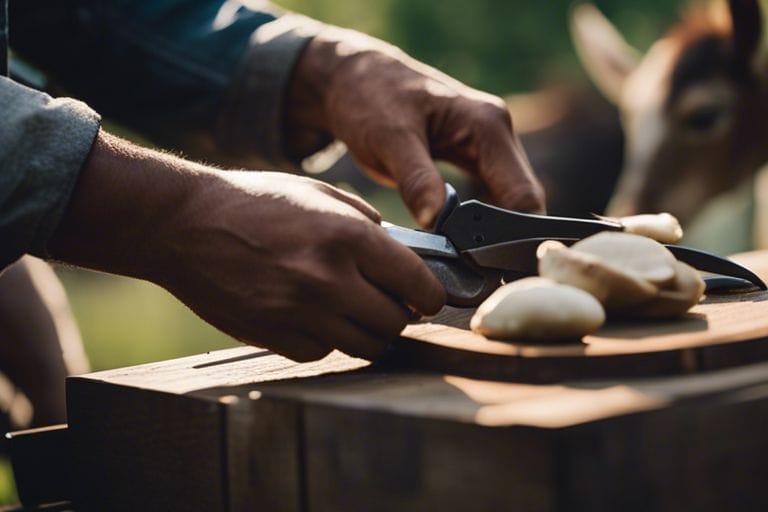
Tips and Tricks for Successful Hoof Trimming
Handling and Restraint Techniques
Even though hoof trimming can be a stressful experience for goats, proper handling and restraint techniques can make the process more manageable. It’s crucial to approach the goat calmly and confidently, as they can pick up on your energy. To safely trim hooves, consider using a milking stand or securely restraining the goat to minimize movement and ensure your safety.
- Position the goat securely on the stand or have a helper hold the goat while you focus on the trimming.
- Use a neck tie or collar to gently secure the goat’s head in place to prevent sudden movements.
Assume that the goat may be apprehensive at first, but with patience and gentle handling, they will become more accustomed to the process over time.
Managing Stress and Anxiety in Goats

Handling goats during hoof trimming can be a source of stress and anxiety for them. It’s crucial to create a calm and reassuring environment to help the goats relax during the process. By speaking softly, offering treats, and using positive reinforcement, you can help alleviate their anxiety and make the trimming experience more positive for them.
Successful hoof trimming sessions rely on the ability to recognize and address signs of stress and anxiety in goats. Pay attention to their body language, such as ear positioning and vocalizations, to gauge their comfort level. Taking breaks when needed and maintaining a calm demeanor can go a long way in reducing their anxiety.
Common Mistakes to Avoid During Trimming
Little mistakes during hoof trimming can lead to unnecessary stress for both you and your goats. One common mistake is rushing the process, which can result in uneven or incomplete trims. Take your time and ensure each hoof is properly inspected and trimmed to prevent issues down the line.
Common mistakes also include trimming too much off the hoof, leading to discomfort and potential injury. It’s important to only remove small amounts at a time and avoid cutting into the sensitive quick. By practicing patience and precision, you can avoid these common pitfalls and provide a positive trimming experience for your goats.
Pros and Cons of Regular Hoof Trimming
Many goat owners understand the importance of regular hoof trimming for their goats. However, like any management practice, there are both pros and cons to consider when deciding how often to trim your goats’ hooves. Below is a breakdown of the benefits and potential drawbacks of regular hoof trimming for goats:
| Benefits | Drawbacks |
| Prevents lameness | Potential for over-trimming and causing pain |
| Improves overall hoof health | Time and effort required for regular trimming |
| Reduces risk of foot rot | Some goats may be more difficult to handle for trimming |
Benefits of Regular Trimming for Goat Health

While regular hoof trimming may seem like a simple maintenance task, it plays a crucial role in maintaining the overall health and well-being of your goats. Proper hoof care can prevent lameness, reduce the risk of foot rot, and improve the overall condition of the hooves.
Additionally, by regularly trimming your goats’ hooves, you can catch any potential issues early on and address them before they become more severe, ensuring that your goats are comfortable and mobile.
Potential Drawbacks and Considerations
On the flip side, there are some potential drawbacks and considerations to keep in mind when it comes to regular hoof trimming. One of the main concerns is the possibility of over-trimming, which can cause pain and discomfort for the goat. It’s important to have a good understanding of proper trimming techniques and to know when to stop to avoid this issue.
For instance, some goats may be more sensitive or resistant to having their hooves trimmed, which can make the process more challenging and time-consuming. It’s important to approach hoof trimming with patience and to ensure that the goat is comfortable throughout the process to minimize stress and potential injuries.
Weighing the Advantages and Disadvantages
There’s no doubt that regular hoof trimming is an important aspect of goat care that can have significant benefits for their health and well-being. However, it’s important to weigh these advantages against the potential drawbacks and considerations to determine the best trimming schedule for your goats.
Consistency, proper technique, and understanding your goats’ individual needs are key factors in ensuring that hoof trimming is a positive experience for both you and your goats.
Conclusion
Conclusively, proper hoof trimming is a critical aspect of goat care that should not be overlooked. By following the step-by-step guide provided, goat owners can ensure their animals have healthy hooves, leading to improved overall well-being and productivity. Regular maintenance of hooves can help prevent issues such as lameness and infections, ultimately contributing to the longevity and quality of life for goats.
It is important for goat owners to invest time and effort into learning and practicing proper hoof trimming techniques. By doing so, they can confidently and effectively maintain their goats’ hooves, promoting their comfort and mobility. Remember to handle each goat calmly and patiently during the trimming process to minimize stress and ensure a successful hoof care routine.
FAQ
Q: Why is proper hoof trimming important for goats?
A: Proper hoof trimming is important for goats to prevent lameness, discomfort, and other hoof-related issues. It also helps maintain their overall health and wellbeing.
Q: How often should I trim my goat’s hooves?
A: Goat hooves should be trimmed every 4-8 weeks, depending on the individual goat’s hoof growth rate and the terrain they are kept on.
Q: What tools do I need for hoof trimming?
A: You will need a pair of hoof trimmers, a rasp, a hoof pick, and a sturdy surface for the goat to stand on during the trimming process.
Q: How do I properly trim a goat’s hooves?
A: To trim a goat’s hooves, start by securely restraining the goat and then carefully trim the overgrown hoof wall, avoiding the quick. Use the rasp to smooth out any rough edges.
Q: What are some signs that a goat needs hoof trimming?
A: Signs that a goat needs hoof trimming include overgrown hooves, limping, uneven gait, and excess wear on one side of the hoof. Regularly check your goat’s hooves for these signs to determine when trimming is needed.










